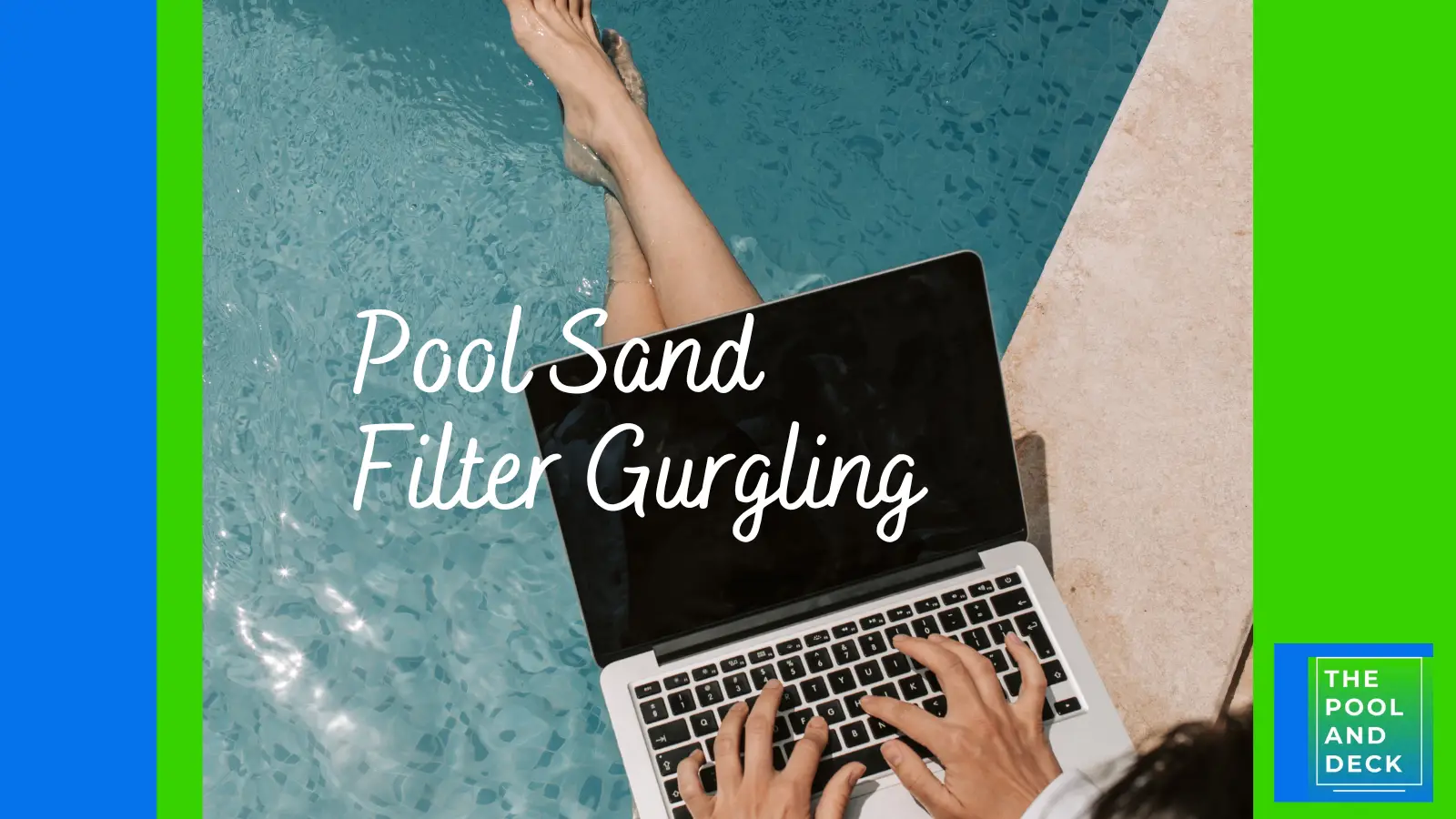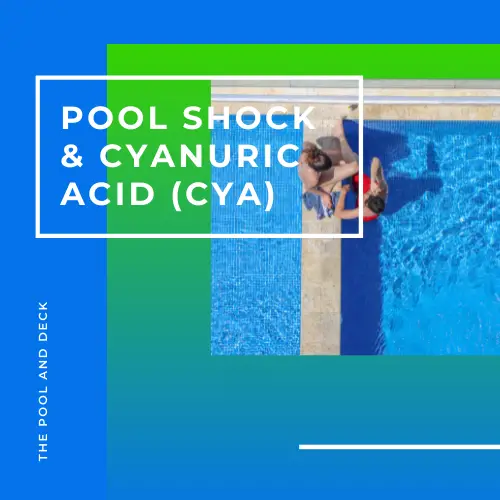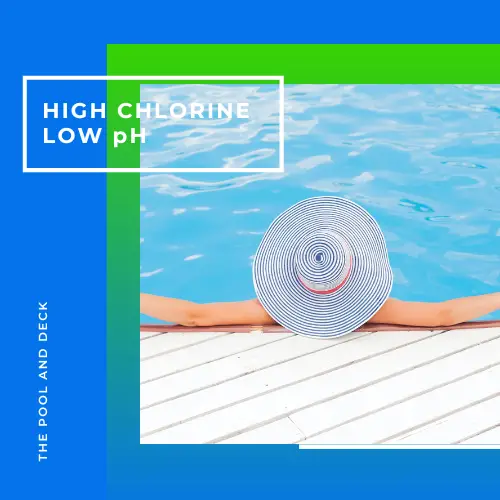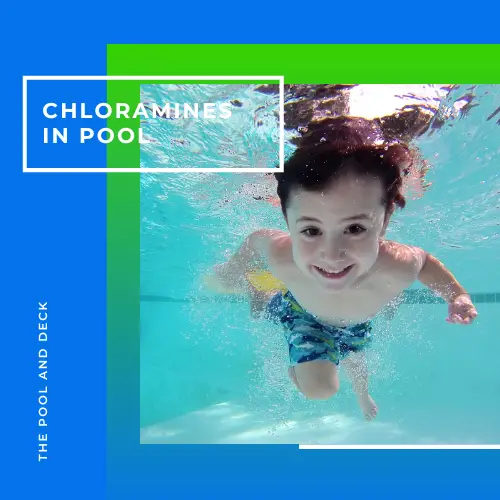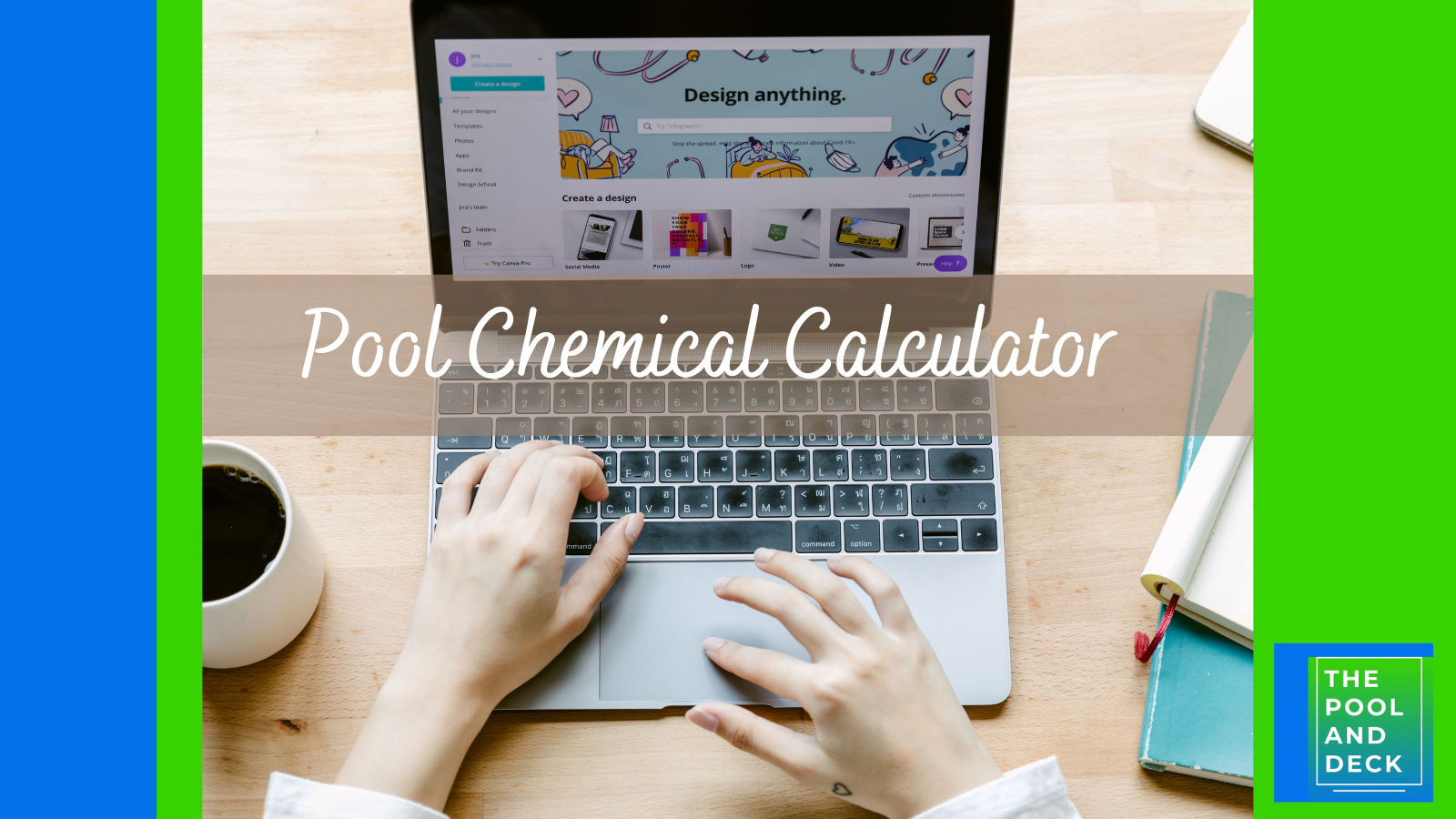Algaecide and Chlorine: Is it Better to Use Both?
As an Amazon Associate, I earn from qualifying purchases.
Table of Contents
Are Algaecide and Chlorine the Same?
Algaecide conjures up the image of a “killer” of algae. Not surprising as the suffix -cide in Latin means “killer”. Biocide, Pesticide, Homicide are “killer” words. However, when it comes to the algae in your pool, Chlorine is the “killer”. So, are Algaecide and Chlorine the same?
Algaecide is not the same as Chlorine. Algaecide can not even be a replacement to Chlorine or vice-a-versa. It is never “Algaecide OR Chlorine”. It is always “Algaecide AND Chlorine”. Both Algaecide and Chlorine are required to keep your swimming pool algae free. They work as a team.
Even though Algaecide and Chlorine must work together to keep your pool algae free, they are chemically different and act on the algae in different ways.
From a chemistry point of view, an Algaecide is a compound, sometimes even a complex polymeric compound, as in a PolyQuat Algaecide. Chlorine, on the other hand, is an element from the halogen group. In fact, its close cousin, Bromine is sometimes used as a replacement to Chlorine.
So, let me dive deeper and explain what Algaecide and Chlorine are, how they act on the algae in your pool, how to use them and why they are the two most important chemicals for keeping you safe and your swimming pool healthy.
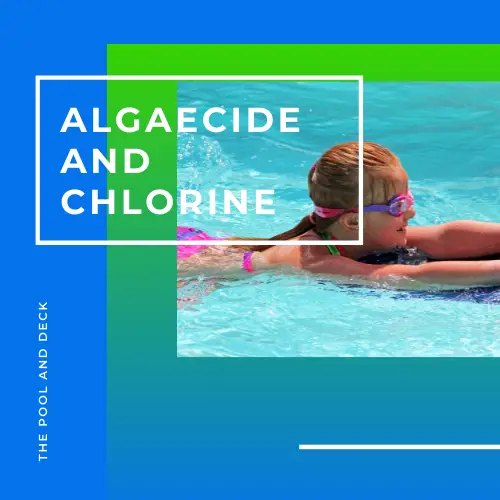
What is an Algaecide?
Algaecide is a swimming pool chemical that weakens the algae making it easier for chlorine to kill them. Algaecide may act by disrupting energy transport, cell division, or the cell membranes of the algae.
Three types of Algaecides can be used in swimming pools. Quats & PolyQuats have a similar chemistry. Both are Quaternary Ammonium Compounds. Each type of Algaecide is a different chemical. These are:
Quats are great for preventing algae growth but not very effective at killing them on their own. They can also cause foaming.
PolyQuats are more suited to killing rather than prevention of algae. Polyquats last longer so you have to use them less often. They also do not cause foaming. But they do cost a lot more!
An alternative to Quats & PolyQuat Algaecides are metal based Algaecides. Copper-based Algaecide which contains copper ions is most commonly used in swimming pools. They are very powerful and highly effective at killing algae. If you have black algae then you need to use a copper based algaecide.
Copper-based Algaecide should be avoided if possible because it can corrode pool fittings and turn blonde hair green. Excess copper in pool water also causes pool cartridge to turn blue.
In a nutshell, Algaecides prevent growth of algae and make them weaker so that the chlorine or other sanitizers can easily kill them.
What is Chlorine?
Chlorine in its most basic elemental form is actually a yellow-green gas. Chlorine is extremely reactive and a very strong oxidizing agent. If you are a fan of World War movies you will remember it as the deadly poisonous gas used on the battlefield.
Chlorine is the active ingredient in bleaches and disinfectants. It has excellent sanitization properties because it is a strong oxidizing agent. Chlorine is the go to chemical for keeping swimming pools free of harmful algae and bacteria.
Chlorine used in swimming pools is of course not a gas or in its elemental form. Instead it is available as chlorine tablets, chlorine granules or chlorine powder. These are compounds like sodium dichloro-s-triazinetrione (dihydrate or anhydrous) and trichloro-s-triazinetrione.
In short they are called “dichlor” and “trichlor”. They are stable when solid. However, the chlorine ions form hypochlorous acid (HOCl) in the presence of water in the swimming pool. Hypochlorous acid (HOCl) is highly reactive and quite unstable.
The HTH Super 3″ Chlorinating Tablets are an effective swimming pool water sanitizer. The HTH 3” Chlorinating tablets are a simple, convenient way to keep pool water clean and clear. Add 1 tablet per 10,000 gallons of pool water, placing tablets into the skimmer basket, floater or feeder.
These convenient and easy to use tablets are formulated to protect against chlorine loss in direct sunlight and can be used in feeders. They are designed to dissolve slowly to provide a steady source of available chlorine.
The Trichlor Tablet sanitizes and protects pool from algae and bacteria for up to one week. It is ideal for saltwater systems and vinyl pools too.
It is the hypochlorous acid that kills the algae, germs and bacteria in your pool. Algae are microorganisms from the plant kingdom. They thrive in water with high pH but die when the pH level is lowered by the hypochlorous acid (HOCl).
When Should I add Algaecide to my Pool?
Algaecide is primarily a “preventive” swimming pool chemical. It will and does kill algae but that is not its main role. Leave that to Chlorine!
I always recommend Kem-Tek Pool & Spa Concentrated Algaecide as it is very effective for prevention of algae and also helps to clarify cloudy pool water. It has a non-foaming formula and can be used in all types of pools.
Adding Algaecide to your pool must be an essential part of your weekly pool maintenance routine.
Algaecide should be added:
- Regularly, once a week. This should be a part of your weekly pool maintenance activity. If you can, add it on a Thursday evening, after every one is done using the pool. Run the pool filter for 2-4 hours to ensure the algaecide is well distributed. Your pool will be in top condition for use over the weekend.
- After “shocking” the pool and only once the Free Chlorine (FC) is 5 ppm or lower. You should shock your pool every weeks or earlier if the pool has turned green. The shock treatment may require more than one cycle in the case of a green pool.
- Before heavy rains, when possible. This will ensure that your pool is well prepared for the onslaught of algae that the rainwater and the storm is sure to bring. Find out more from my post Better Put Algaecide In Your Pool Before It Rains.
- Before pool closure. Algaecide will protect your pool from algae growth during winter, when you are not using it. Your pool will be in a lot better state when you are ready to start using it next spring.
- After pool opening. OK, adding algaecide before pool closure will help prevent algae growth. But do not expect it to work 100%. You will still need to add algaecide when you are ready to open the pool.
- If your pool looks cloudy green. A cloudy green pool is an indicator that your pool may be in the early stages of algae growth. Add algaecide to stop the algae growth as soon as possible.
How Often Should I Put Chlorine in my Pool?
The level of Free Chlorine (FC) must be maintained between 1 to 4 ppm levels at all times. The ideal level is 3 ppm.
If less than 1 ppm your pool is at serious risk of harboring algae & bacteria. If over 4 ppm you may get itchy skin and burning eyes after a swim.
Free Chlorine (FC) levels are constantly being depleted. There are two main reasons for it.
Used for Sanitization
It gets used up to kill the algae, germs & bacteria in your pool. If your pool gets used by more people the chlorine levels will deplete faster. Each swimmer adds to the algae, germs & bacteria in the pool water.
Algae, germs & bacteria can also be added to the pool by yard debris, blown into the pool, by wind or storms.
Depletion by UV Rays
The UV rays from the sun break down the free chlorine (FC). Sunny & hot summer days will break down the FC faster.
Another swimming pool chemical, Cyanuric Acid (CYA), is used to slow down the impact of UV rays on free chlorine. Think of Cyanuric Acid as a sunscreen for your chlorine.
Test FC and pH Level
It is important to test the FC level and the pH level of your pool water at least twice a week. Best is to test before a weekend and after a weekend because the swimmer load on the pool can be heavy on weekends.
Keep in mind that Free Chlorine (FC) is the part of the chlorine that is actively engaged in killing the algae and the pathogens.
The pH level of the pool determines the % of Free Chlorine (FC) to Total Chlorine (TC) in the pool. A low pH increases the %age of FC to TC making the Chlorine more effective. But low pH means high acidity, which results in skin & eye irritation among swimmers.
The best balance is a pH level of 7.5 and a Free Chlorine (FC) level of 3 ppm.
Is Shock basically Chlorine?
Shock and Chlorine have the same basic ingredient; namely chlorine. The main difference is in the strength intensity and the way they are added to the pool.
A popular way to add chlorine is to use chlorine tablets in floaters. The tablets are constantly in the pool and leach out free chlorine at a regular pace.
Some floaters are designed such that you can stack more than one tablet. In which case you do not need to replenish the tablets that frequently.
Chlorine for pools also comes in granular or powder forms. This needs to be sprinkled on top of the swimming pool. Granular or powder chlorine dissolves and gets used up fast. It is more suitable for smaller pools.
Chlorine tablets, granules or powders are perfect for maintaining Free Chlorine (FC) levels steady within the prescribed 1 to 4 ppm range.
But for shocking the pool you need the Free Chlorine (FC) level of your pool to spike up and be maintained at that high level for several hours. That is the only way to clear a green pool or even make a serious dent on high infiltration of algae & bacteria in your pool.
The shock is formulated to do just that. Shock comes either in Liquid form or Granular form.
Liquid Shock
Liquid Shock is a concentrated solution of Sodium Hypochlorite. The concentration can range from 5% to 12.5%. It can be poured directly from the container into the pool. It also has the advantage of not leaving any residue.
However, Liquid Shock has a shorter shelf life and supply of the product is not guaranteed. As a result it is rarely used for residential swimming pools.
Granular Shock
Granular Shock comes in plastic buckets or pouches. It needs to be dissolved in a bucket of water before it can be added to your pool. There are three formulations available as under:
- Cal Hypo: (Calcium Hypochlorite) is the most popular one because it is both effective and economical.
- Dichlor: (Sodium Dichloro-S-Triazinetrione) is a premium quality shock. Its main benefit is that it does not affect the pH of the pool and leaves much less residue than Cal Hypo.
- MPS: (Potassium Monopersulfate) is a non-chlorine shock. It is not as powerful as the others, but the advantage is you can be swimming in your pool just 15 minutes after adding it.
For more information on Pool Chlorine Types refer to my post Complete Guide To Pool Chlorine Types. (What Is The Best?).
Recommended Swimming Pool Chemicals
Best All Purpose Algaecide
Kem-Tek Pool & Spa Concentrated Algaecide is very effective for prevention of algae and also helps to clarify cloudy pool water. It has a non-foaming formula and can be used in all types of pools.
Best 3″ Chlorinating Tablets
The HTH Super 3″ Chlorinating Tablets are an effective swimming pool water sanitizer. These convenient and easy to use tablets are formulated to protect against chlorine loss in direct sunlight and can be used in feeders.
They are designed to dissolve slowly to provide a steady source of available chlorine.
Best Multi-purpose Pool Shock
The HTH Super Green to Blue Advanced Shock is a 2-part system. Pack I shocks your pool with a boost of chlorine, helping you fend off bacteria. Pack II is a powerful flocculant that drops particles to the bottom of the pool for easy vacuuming. Both packs work together to create beautiful, crystal-clear pool water within 24 hours.
How To Use: Simply follow the on-pack instructions for both Pack I and Pack II. Pack I is the Cal Hypo Shock treatment and Pack II is a flocculant that drops dead particles to the bottom of the pool for easy vacuuming.
Thank you very much for reading the post. I do hope you found it informative and helpful.

